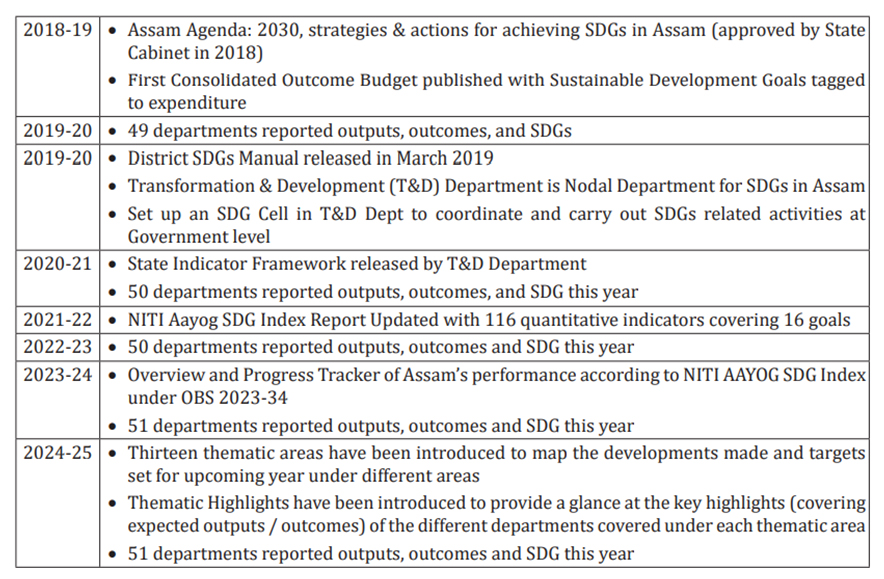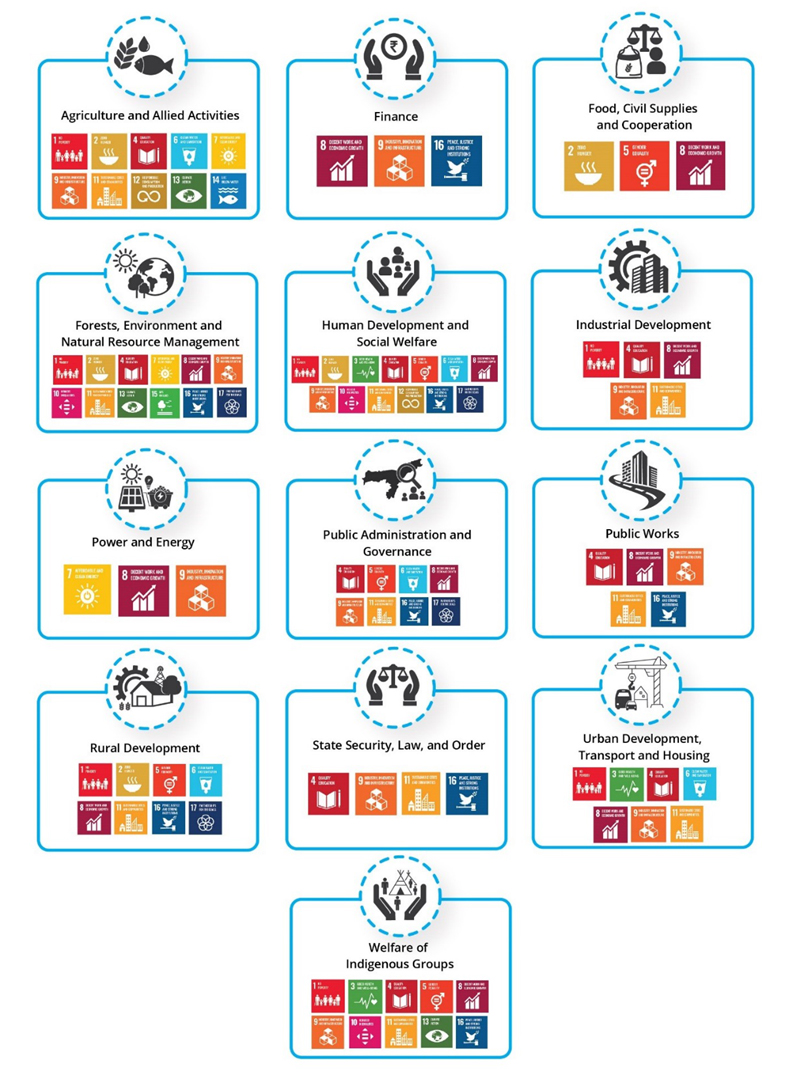India is confronting several emerging challenges, like the impacts of climate change, increasing inequities and lagging human development indices. The post-2015 United Nations Sustainable Development Agenda framework offered an opportunity to renew and integrate efforts to significantly meet national and global aspirations within a defined time frame. However, achieving it is largely subject to adequate and effective prioritisation in national planning, budgeting and accountability frameworks.
Ensuring the timely availability of optimum financial resources is one of the initial steps for achieving the post-2015 development agenda. It is important to have outcome-oriented budgeting in the country to nurture an open, accountable, proactive and effective style of governance.
The concept of outcome budgeting was introduced in India in 2005, which mandated that the ministries and departments (M/D) at all levels should be involved in a meaningful way in the implementation processes of the developmental schemes across the country.
Since then, various M/Ds at different tiers of governance have been encouraged to follow outcome-oriented budgeting by transitioning from mere ‘outlays’ to result-oriented ‘outputs’ and ‘outcomes’ through their outcome budget statements (OBS).
OBS is a budgetary instrument that links expenditure to specific targets by indicating the output / outcome to be achieved by making that expenditure. It helps align government policies, strategies and budgets towards achieving UN-mandated Sustainable Development Goals (SDG).
Around eleven Indian states have started following the practice of formulating their OBSs in the past few years. Assam was the front-runner in adopting SDGs and preparing SDG-linked outcome budgets at the sub-national level in the country.
Outcome budgeting in Assam
Assam was the first Indian state to adopt the SDGs in 2016. Its budgeting focused on SDG outcomes as outlined in Assam Agenda 2030. Following this, in 2018-19, Assam introduced the OBS alongside the state’s annual budget. The prime objective of this document is to present the state’s commitments to the SDGs and their corresponding targets in quantifiable terms.
In conjunction with detailing the financial allocations for schemes / programmes, the outcome budget document also encompasses the projected outputs and outcomes for them.
The outcome budget was developed in close collaboration with Assam’s SDG Cell to ensure that it is consistent with the SDG framework and its targets. Hence, it adheres to the principles of the 2030 Agenda and the SDGs. It is worth noting that Assam has been classified as a ‘Performer’ state in the central public policy think tank NITI Aayog’s report on the SDG India Index for 2020-21.
In its endeavour to ensure meaningful OBS, the finance department of Assam government has taken several initiatives from time to time. Regular capacity building workshops have been organised for state officials to sensitise them about the framework. The sessions have been conducted with a focus on building awareness around how departments should set realistic and measurable targets for every activity they plan to carry out in the upcoming financial year.
Support from expert agencies (including think tank Centre for Budget and Governance Accountability or CBGA) has been sought in this direction.
Not only this, efforts have been made towards the systematic compilation of the statement and all the inputs from different departments are updated with the help of the financial management information system of the state. This ensures uniform and timely input from all departments.
It is noteworthy that the OBS of Assam has improved over the years in terms of its format, quality of reporting and number of departments reporting under it.
Improvements in Assam’s Outcome Budget Statement

Source: Assam Outcome Budget Statement 2024-25.
In the budget for the upcoming financial year (2024-25), Assam government has taken a step forward in terms of grouping the state’s 51 departmental schemes/interventions linked to their respective SDGs under thirteen carefully identified thematic areas. This is to promote overall welfare and development and achieve Assam Vision 2030.
The figure below depicts the thirteen thematic areas and SDGs linked:

Source: Assam Outcome Budget Statement 2024-25
But there is still a lot of scope to strengthen the outcome budgeting process in the state. Capacity building of the district officials will help in improving the accuracy of reporting and providing state and central share of outlays separately will help in increasing transparency.
Publishing a bilingual statement will increase its reach and uptake, providing details of target beneficiaries will make it more meaningful and specifying time allotted for the completion of goals will help in monitoring progress. Further, adding actual achievements from last year will provide a monitoring framework and help in ensuring accountability.
Moreover, it is crucial for the government to regularly monitor departmental performance based on commitments outlined in the outcome budget, ideally on a quarterly basis.
While the importance of outcome budgeting is well established, most Indian states do not follow this practice. The ones following also need substantial improvement, either in the process or the reporting format (or both), to make it more meaningful.
Some of the major challenges that pose a hindrance in linking the SDGs with outcome budgeting in India pertain to:
- the lack of understanding/awareness of these at the district level and below,
- unavailability of disaggregated data pertaining to measurement indicators as well as performance indicators,
- difficulty in accurately aligning/mapping SDGs to schemes/programmes due to unavailability of relevant indicators and the ‘Indivisible’ (rather more appropriately expressed as ‘multi-dimensional’) nature of SDGs and
- inefficient coordination among the various M/Ds at the national and sub-national levels to be able to adequately and appropriately capture them.
In lieu of this, most of the M/Ds end up mapping their budgets against the most relevant SDGs in a consolidated manner. Instead, the ideal approach should have been to use the achievement of the SDGs as a yardstick to evaluate the performance of the overall budgetary allocation and expenditure towards attaining socially desired outcomes in India.
Despite this, the outcome budget provides an opportunity to strengthen the practices of ‘better budgeting’ at the national and sub-national levels in the country.


 21 February 2024
21 February 2024